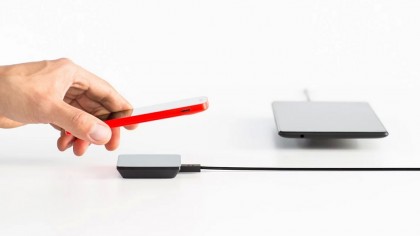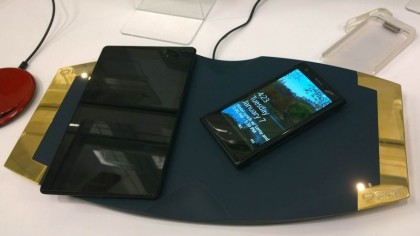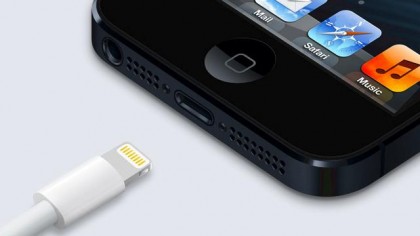Why isn't wireless charging a thing yet?
Get it together, tech companies!

We're supposed to be in a tangle-free world by now. I was promised a wire-free world, a charger-less utopia. What went wrong?
Sometimes it's hard to remember we're in the future. That this is supposed to be the point when we have flying cars/space pills/robot companions.
That extends to the mundane things too. It's all too easy to forget that promises are made about certain bits of tech, and the deadline passes without anybody noticing.
I was looking down at my desk the other day, internally wilting at the multitude of wires snaking their way across, and I realised: weren't we supposed to be a wireless world by now?
Wires not needed
Wi-Fi and mobile data are so entrenched in day-to-day that we get irritated when they don't work, that we have to dig out the Ethernet cable to work out why something isn't working. So why do we still need so many chargers?
The technology is there. Whether it's inductive or magnetic resonance doesn't matter one bit to most people. What entices consumers is the notion of being able to toss down a phone, tablet and pair of wireless headphones on the bedside table and have them all fully charged by the morning.

Perhaps I'm being a bit pedantic by being so annoyed by this, but I've sat through countless briefings where I was told, by a smorgasbord of tech companies, that this was the future. The charger was dying. Cheaper phones for all!
Get daily insight, inspiration and deals in your inbox
Sign up for breaking news, reviews, opinion, top tech deals, and more.
"Great!" I thought. "No more chargers for the cats to chew!" (They do. Every lead I've got looks like it's been attacked by an army of angry pins).
Nokia kicked this off: back in September 2012 the Lumia 920 was announced, complete with built in wireless charging compatibility. Deals were struck with major café chains, with McDonalds. The future was here, people.
Two years down the line, and I'm not seeing much more penetration. Nokia keeps taking the technology out, making it available as a cover, then putting it back in the next phone.
The charging pads are tiny. The technology isn't available right now, and it's maddening.

And the kicker? It should be. The problem is the industry can't decide which way is best for the tech. The Wireless Power Consortium (which promotes the commonly used Qi standard) sits in one corner. In another, the Alliance for Wireless Power. In the next, Power Matters Alliance.
We just need the People's Front of Judea in there to complete the square.
One standard to rule them all
The multitude of competing standards makes it impossible to invest. One offers a better technology, another penetration in more brands, another… well, it's got a good name.
So come on guys: get it together. Pacts are being struck, but it's long, drawn-out and boring. The annoying thing is this isn't like Betamax and VHS, otherwise it would be a simple chat with the adult film industry and we'd have a quick winner.
Sadly there doesn't seem to be an appetite for wirelessly-charged smut (yet).

The good news is this isn't a foregone conclusion: wireless charging is still a viable technology and there's a genuine appetite for it from consumers, because it's cool. If Apple made it the headline feature of the iPhone 6, you can bet it would suddenly be massive.
If Samsung and HTC plopped a wireless charging pad in each box, the tech would proliferate at a rate of knots. But with all this infighting it just costs too much and the price of wireless charging remains too high.
I beg you, WPC, A4WP and PMA. Drop the acronyms, band together and make the Charging Over Wireless Protocol Agreed Technology. And stop my morning gargle of frustration when I've, once again, forgotten to charge something important.

Gareth has been part of the consumer technology world in a career spanning three decades. He started life as a staff writer on the fledgling TechRadar, and has grew with the site (primarily as phones, tablets and wearables editor) until becoming Global Editor in Chief in 2018. Gareth has written over 4,000 articles for TechRadar, has contributed expert insight to a number of other publications, chaired panels on zeitgeist technologies, presented at the Gadget Show Live as well as representing the brand on TV and radio for multiple channels including Sky, BBC, ITV and Al-Jazeera. Passionate about fitness, he can bore anyone rigid about stress management, sleep tracking, heart rate variance as well as bemoaning something about the latest iPhone, Galaxy or OLED TV.